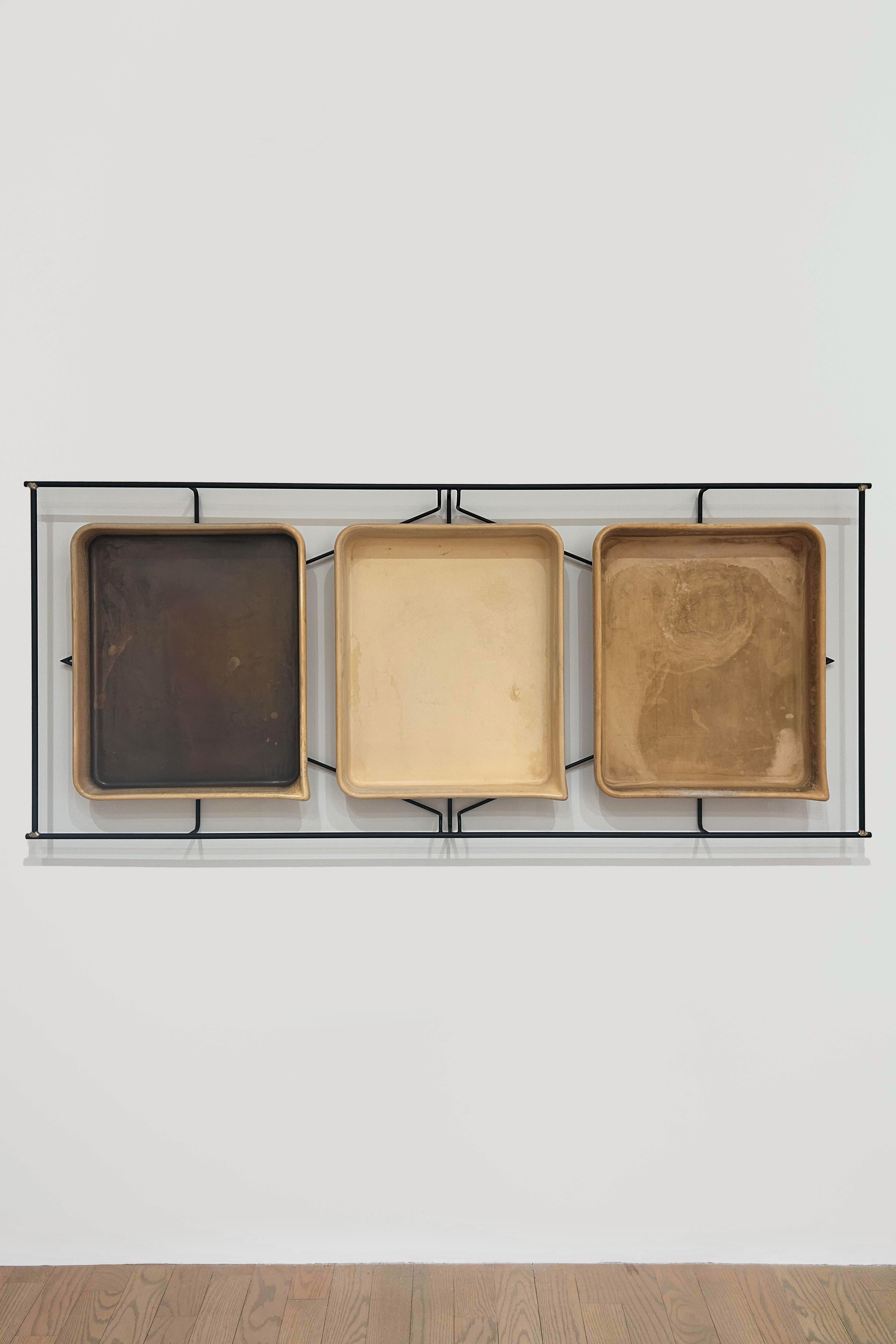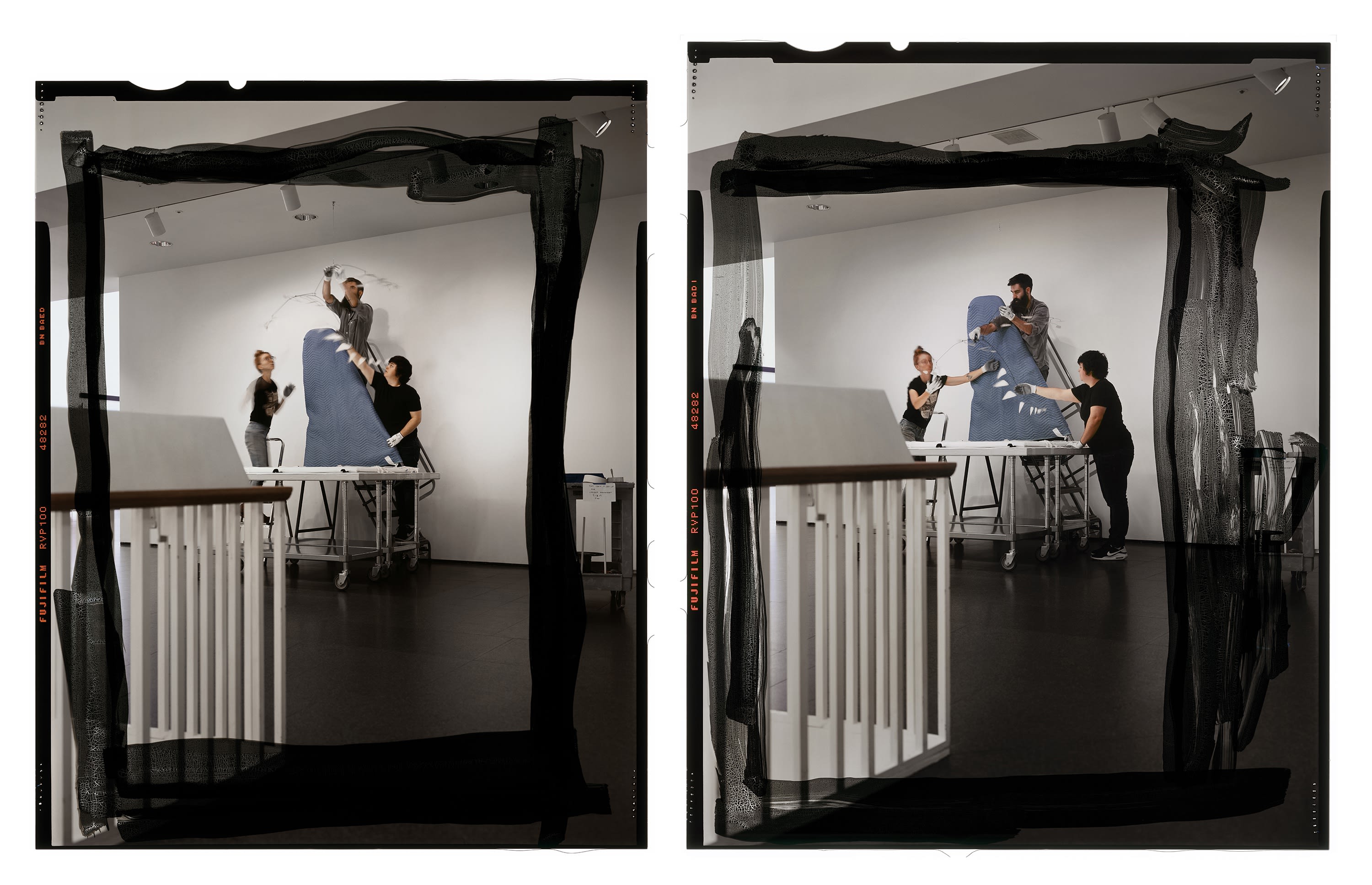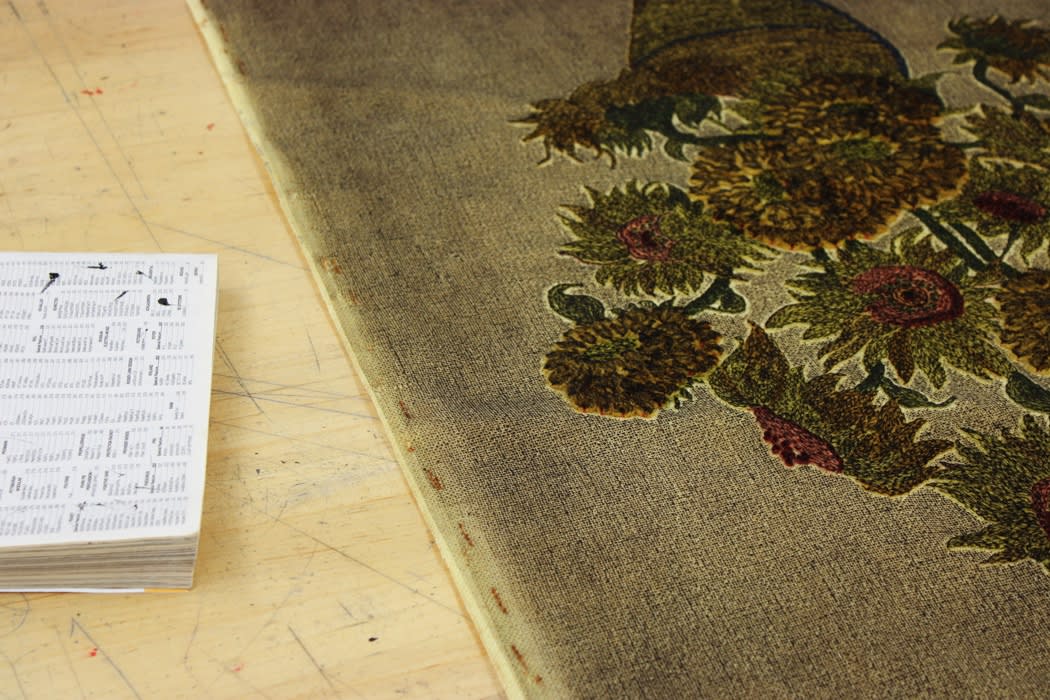-
-

-
-
In Mine (midnight), Mine (morning), collagraph transfer prints, Alex Chitty transforms imagery from one of the world’s most known paintings, Vincent van Gogh’s Fifteen Sunflowers (1888), into something novel and ethereal.
Van Gogh wrote to a friend “sunflowers are mine.” The artist’s signature floral paintings—while they failed to sell in his lifetime—are now ubiquitous. Many don’t realize that these works are memento mori, meditations on the passage of time. Within the single vase of Fifteen Sunflowers the artist painted flowers at different stages in their lifespan: half are shown in full bloom and the rest dying. In the new collagraph transfer prints, Chitty offers a further meditation on “expanses of time.” According to the artist, “Each of the two prints represents the same image as it might appear at two contrasting moments."
Chitty recontextualizes familiar objects to encourage deeper, more conscious ways of seeing. When ideas emerged for a print-based project, the artist sourced a vintage crewel embroidery of Van Gogh's painting from an independent seller on eBay. The unstretched crafted replica was placed face down onto an inked monotype plate. Two visually distinct black and white depictions of van Gogh’s sunflowers emerged through variations of pressure, ink consistency or application, and paper type. After many experiments on the press, the well-known image shed its identity as either a painting or an embroidery when the final ink impressions became a limited edition printed diptych. -
 Mine (midnight), detail
Mine (midnight), detail -
 Advertisment, Woman's Day and crewel embroidery used on press.
Advertisment, Woman's Day and crewel embroidery used on press. -
Hours, 2025, (figure 1) presents three trays originally used in a photographic darkroom. The coloring in the base of the trays nods to the build up of countless photographic images made within them over time. Oriented vertically, they register first as pictures, before becoming recognizable, functional objects again. Here, as with Mine (midnight), Mine (morning), Chitty employs objects which hold specific histories from overlapping personal/cultural/societal narratives. The artist's work often plays with the possibilities of close iteration, as seen in Precedence, 2019, (figure 2) where the images document the hidden labor of a Calder Mobile, (Ghost, 1964) being installed and uninstalled at the Museum of Contemporary Art, Chicago.
-
"Chitty recontextualizes familiar objects to encourage deeper, more conscious ways of seeing."

Hours, 2025 Precedence, 2019
Precedence, 2019 -
The artist chases projects that, like this one, encourage a closer look at the things we presume to already “know.”. The project spurred a deeper investigation of van Gogh’s sunflower paintings and his biography, as well as the biology and natural history of sunflowers themselves. Native to North America, sunflowers were grown and harvested by indigenous peoples as early as 3000 BC. In the 16th century the plant was introduced to Europe and grown ornamentally in private gardens before being cultivated for seed oil. Chitty learned that sunflowers host the Fibonacci number sequence and follow the golden mean. She delights in how the final diptych compliments the circadian rhythm of young sunflower buds which trail the sun across the sky from dawn to dusk each day.
The sunflowers were never really entirely “his.”
Mine (midnight), Mine (morning) was produced over several months on opposite shores of Lake Michigan, in print studios at the Ox-Bow School of Art and at Spudnik Press in Chicago in the spring of 2025.
The artist and publishers would like to thank:
Shannon Stratton, executive director, Ox-Bow School of Art and Artists’ Residency for her support and collaboration. Read about the residency at Ox-Bow, here.
Mary Coyne and PATRON Gallery, Chicago. -
-

Alex Chitty: Mine (midnight), Mine (morning), 2025
Current viewing_room



 Crewel embroidery used on press, detail
Crewel embroidery used on press, detail
